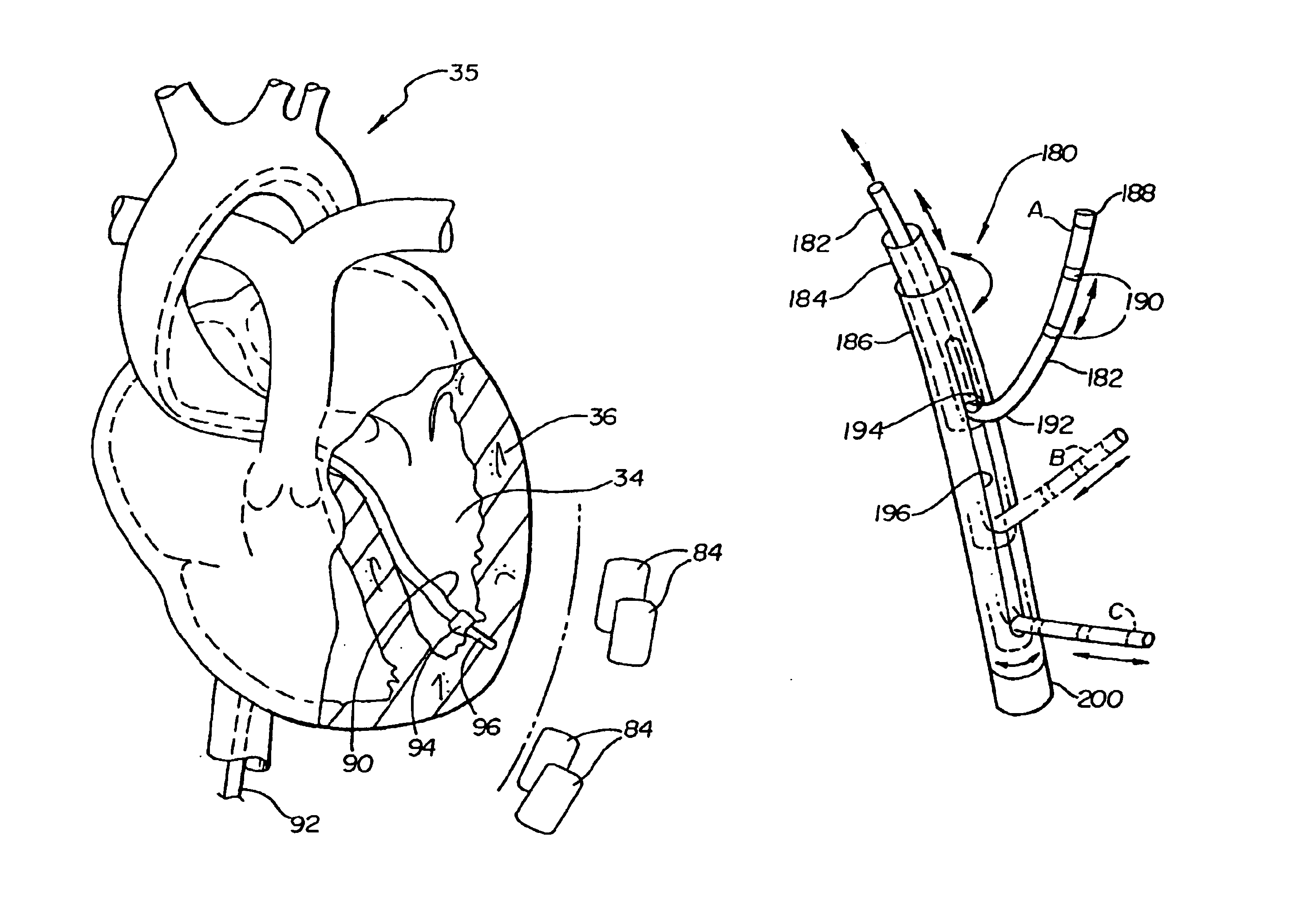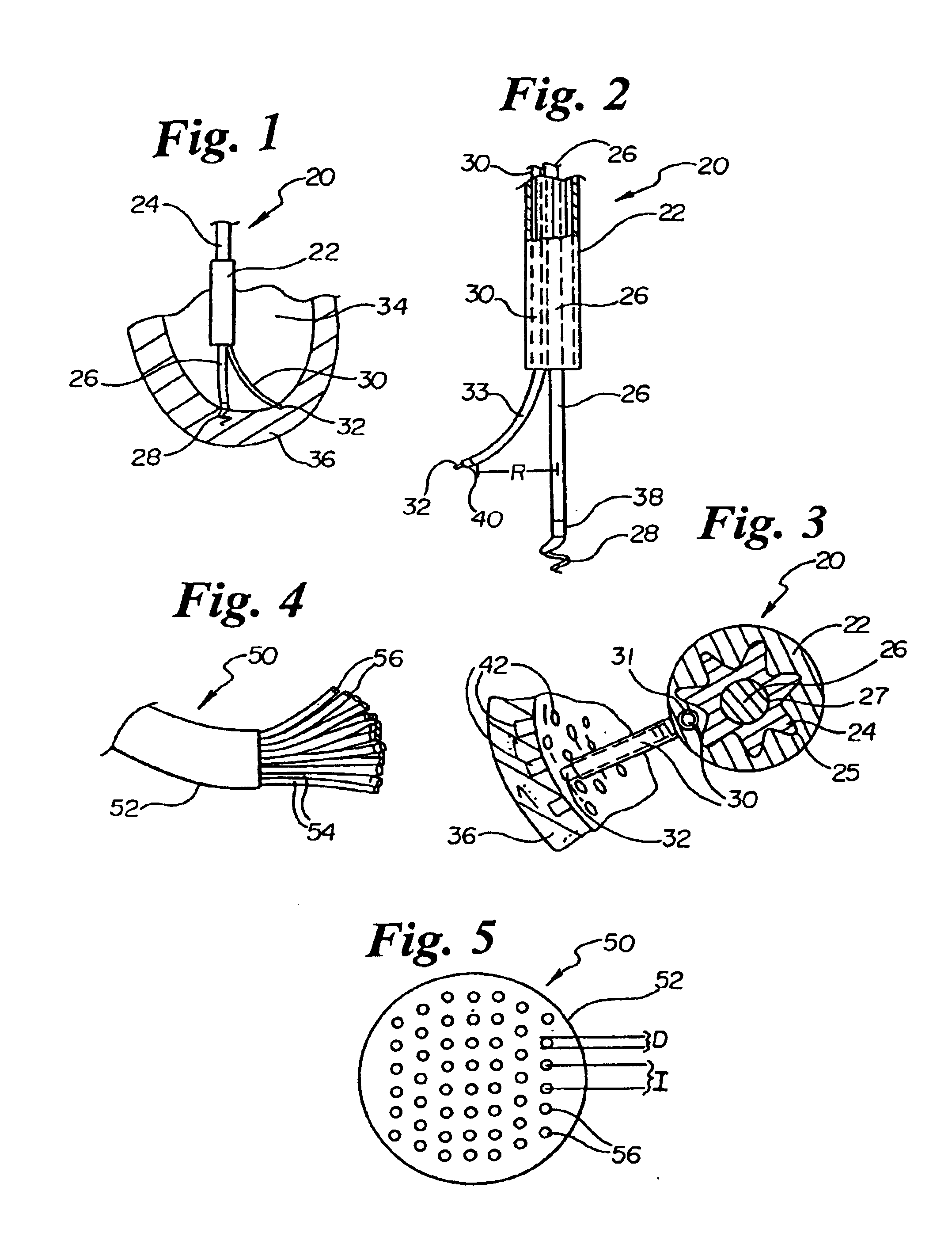Percutaneous myocardial revascularization device and method
a myocardial revascularization and percutaneous technology, applied in the field of percutaneous myocardial revascularization devices and methods, can solve the problems of no longer being able to contract and difficult to restore blood flow to the heart muscle, and achieve the effect of reducing the movement of the beating heart wall and reducing the movement of the heart wall
- Summary
- Abstract
- Description
- Claims
- Application Information
AI Technical Summary
Benefits of technology
Problems solved by technology
Method used
Image
Examples
Embodiment Construction
[0038]FIG. 1 illustrates an anchorable percutaneous myocardial revascularization (PMR) treatment catheter 20 disposed within a left ventricle 34. PMR catheter 20 includes an inner star shaft 24 disposed within an outer catheter shaft 22, an anchoring shaft 26 disposed within star shaft 24, and a treatment shaft or probe 30 disposed within catheter shaft 22. Catheter shaft 22 has been cut away proximally in FIG. 1, illustrating inner star shaft 24 within. Anchoring shaft 26 has an anchor 28 disposed at the distal end. In a preferred embodiment, anchor 28 has a pigtail or corkscrew configuration, capable of reversibly securing itself to the ventricular wall through rotation of anchoring shaft 26. One embodiment anchor includes a distal barb, capable of securing itself to the ventricular wall through translation of anchoring shaft 26, not requiring shaft rotation for anchoring. In another embodiment, anchoring shaft 26 includes a vacuum lumen therethrough terminating in a distal orific...
PUM
 Login to View More
Login to View More Abstract
Description
Claims
Application Information
 Login to View More
Login to View More - R&D
- Intellectual Property
- Life Sciences
- Materials
- Tech Scout
- Unparalleled Data Quality
- Higher Quality Content
- 60% Fewer Hallucinations
Browse by: Latest US Patents, China's latest patents, Technical Efficacy Thesaurus, Application Domain, Technology Topic, Popular Technical Reports.
© 2025 PatSnap. All rights reserved.Legal|Privacy policy|Modern Slavery Act Transparency Statement|Sitemap|About US| Contact US: help@patsnap.com



